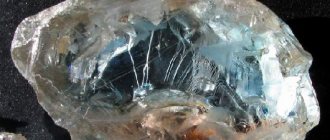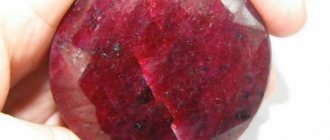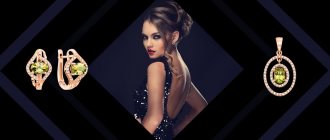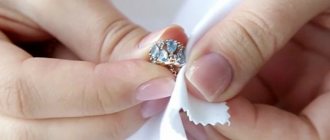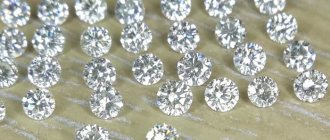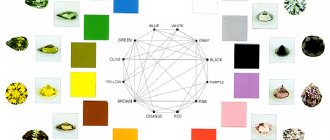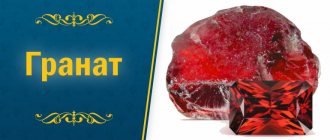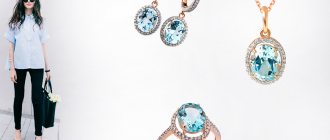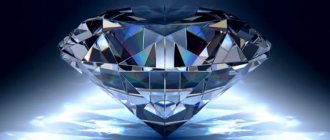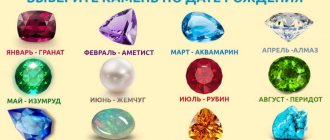- What kind of stone: Precious;
- Deposits: Burma, India, Sri Lanka, Thailand, Afghanistan, East Africa, Russia (Urals);
- Colours: Red with hints of pink, purple or orange;
- Mohs hardness: 9;
- Transparency: Transparent;
- Density: 3.99—4.10 g/cm³
- Formula: Al2O3;
- Suitable for zodiac sign: Leo, Aries, Sagittarius, Scorpio;
- How much does it cost: no less than $100 per carat (lowest quality).
The magnificent, unsurpassed, beautiful ruby stone is the king among precious minerals, the leader of gems.
The Sun Stone is one of the rarest and most expensive in the world, along with diamond, sapphire and emerald. The stone of power and prosperity, belonging to the element of Fire, has no equal in anything.
The moonlight and the shine of distant stars, the beauty of the most magnificent beauty and the morning dawn fade before him. The radiance coming from its depths exudes mystery and infinity.
Its brilliance and richness are so captivating that you cannot take your eyes off this unique creation of nature. Ruby has a special magical power that is incomparable to other stones.
Description of the stone and its meaning
The king of gems and looks the part. A real ruby has a blood red color, which corresponds to its name, which means “red” in Latin.
A high-quality gem looks like this:
- transparent;
- smooth;
- brilliant;
- sparkling;
- solid;
- correct shape;
- heavy;
- without defects (cracks, scratches, voids, impurities); color – carmine red with a bluish tint and silky or milky inclusions.
The gem symbolizes love and beauty, strength and royalty, health and a thirst for life. The stone of mystics and magicians has an incredible layer and does not tolerate lies.
Imitation ruby
Composite stones are considered fake rubies. For example, a thin almandine plate is glued onto red glass. Examining the sample under a magnifying glass will reveal a bond line, or a change in gloss visible from a certain angle at the boundary between glass and garnet. Placing a sample in liquid will also help us find out if it is a fake. The doublet will give itself away as a straight line of connection.
You can distinguish a ruby from glass under a magnifying glass or microscope by gas bubbles and color funnels.
Rhinestones have a single light refraction, and the refractive indices do not correspond to the refraction of the gemstone. But glass can be confused with garnet and spinel based on this indicator.
You can distinguish a real stone from a fake mechanically: by running a file over the stone. A visible mark will remain on the glass or plastic. But what about ruby?
History of the origin of ruby
One of the most valuable jewelry materials, ruby, according to one of the beautiful ancient Indian legends, was tempered in the blood of the terrible demon Vala.
It was his Sun god Surya, fleeing from Ravana (the king of Sri Lanka, famous for his power and victories over the demigods), dropped into the deep waters of Bhakarta (ancient India) with gentle waves shining under the bright sunlight, surrounded by shores overgrown with walnut trees .
This is how amazing precious stones appeared on the shores of these waters, sparkling with a unique brilliance.
Magnificent and radiant, bright red and other shades of gems began to be found on the fragrant banks of the Ravana Ganga (Burma, Afghanistan, Pakistan, Sri Lanka, Nepal, Tibet, etc.).
In these fragrant lands, rubies of various colors and shades are still found today.
Some of them resemble human blood, while others resemble pomegranate seeds or saffron. The best of them are evenly colored, and a unique glow emanates from the core, reflecting the sun's rays in all directions.
The most expensive ruby in the world is the stone found in a Bulgari ring. Its weight is 8.62 carats. This ring was purchased by London jeweler Laurence Graff for £3.6 million in 2006.
One of the legendary ones is the Black Prince. Although it is called a ruby, it is actually not a ruby, but a spinel. It weighs 170 carats.
The stone was first mentioned in the 14th century, when it became the property of the British kings. Now this gem adorns the front cross of the Crown of the British Empire
History of the stone
The closest relative of emerald and sapphire, a stone of the corundum group, ruby adorned the rings, crowns, and bracelets of noble persons even before our era. At least in the 4th century BC, in the ancient Indian great book “Mahabharata” this gemstone was mentioned several times. Symbols of power of rulers of different countries were also decorated with rubies, along with other precious stones. The stone was also noticed on weapons: rubies were used to decorate the hilts of swords and daggers.
The Victoria and Albert Museum of Decorative Arts and Design (London) houses many such specimens. This dagger is quite young, relative to ancient relics, and was made for the Indian Maharaja around 1800 (19th century).
To decorate the handle, 378 rubies of different origins were used; in addition, the weapon was inlaid with emeralds and diamonds.
There are also references to a large rare ruby that belonged to Tamerlane himself: the size of a chicken egg, of exceptional purity. There is no reliable information about the fate of this delightful stone, because today the Timur Ruby is not a ruby at all, but a red spinel. Perhaps we do not know all the details in this story, and the real stone is kept by an unknown private owner. The official version is that the confusion occurred because in the time of Tamerlane they did not know how to distinguish a ruby from an inexpensive spinel (which many experts very much doubt).
The size, age, color, purity of a ruby and its origin have a huge impact on the cost of a piece of jewelry. Special stones will always be surrounded by many legends, and collectors will willingly pay incredible sums for the right to own unique specimens. For example, in 2015, one such ring with a “Sunrise” ruby was sold at Sotheby’s auction: this is real Burmese corundum weighing 25.6 carats. The most valuable color “pigeon blood” in the jewelry world, the exemplary purity of the stone and the setting from Cartier did their job: the final cost of this ruby ring was 30 million and 380 thousand dollars (more than $1 million per carat). The stone has no analogues in the world.
Physical properties
Ruby, and in ancient times yakhont and carbuncle, is an igneous rock. The composition of the stone is corundum (Al2O3). The color of the stone, mainly blood red, is due to the content of impurities of chromium and iron oxides.
Other characteristics:
- jewelry class – I;
- hardness – 9 (on the Mohs scale), which is slightly inferior to the hardness of a diamond;
- density – 3.99–4.10 g/cm³;
- transparent;
- may have rutile inclusions;
- The brilliance of a ruby can only be compared to the brilliance of a diamond.
The vast majority of rubies have internal inclusions.
Calcite inclusions in natural ruby.
Photo: Paolo Cerruti Gemological laboratories can even confirm the place of origin of a gemstone by the nature of these inclusions. They can also be used to determine whether a stone is of natural origin or, for example, hydrothermal.
Also, almost all mined rubies undergo refining - most often this is intense exposure to very high temperatures. The goal is to enhance the color. In some cases, cracks in rubies can be filled with lead glass, and the stones themselves can be painted with colored oils or polymers, and even varnished.
Advertising - Continued below
Place of Birth
The gem is found all over the world, but these are, most often, semi-precious opaque specimens with various defects that cannot be cut.
The highest quality rubies are mined in Asia. One of the oldest deposits, according to ancient legend, is located in Burma, near Myanmar.
Large deposits of the king of stones are found in India, Sri Lanka, Thailand, Afghanistan, as well as in East Africa (Kenya and Tanzania).
Russia also has gem deposits - in the Polar Urals. Another stone is found in the Pamir region.
Refined rubies
To give a natural mineral greater transparency, enhance color, create or enhance optical effects, rubies are refined. For this use:
- high temperature treatment;
- surface diffusion;
- filling cracks with dyes or a colorless substance;
- foil linings;
- irradiation.
In most cases, rubies become more attractive after refining. Sometimes glass-like particles may appear or defects may expand.
Treated stones are natural, but are valued lower than untreated stones, closer to synthetic ones.
Colors and varieties
The main color of the mineral is blood red. The stone can also be fiery crimson, red-brown, yellowish-red, red-pink.
The most valuable gemstone is one that has bluish or purple hues, the so-called “pigeon’s blood” colored stone.
"Pigeon's Blood"
Ruby is very close in composition to sapphire, which is also corundum (aluminum oxide), but does not have such a rich range of colors as its relative, therefore, if suddenly someone somewhere hears about a pink or green ruby, then most likely , we will talk specifically about sapphire.
However, pink ruby still exists. This is a young natural gem of light pink or lilac shades.
Pink ruby
A star ruby is essentially a sapphire and can be any color. Its value lies in the shining six-rayed star located in the center of the processed stone.
Star ruby
A variety of ruby is anionite - a unique rock consisting of green cyosite with inclusions of dark pink or dark red ruby.
The mineral is valued due to its amazing pattern, as well as the combination of colors created by the two rocks in this beautiful creation, the cost of which is very high.
The color and quality of a ruby depend on its deposit.
Ruby color
The best color for a ruby is considered to be a deep, bright red. However, its colors can vary in hue, saturation and secondary colors, meaning some rubies can have a pink, brown, purple or orange tint.
Hue is the main indicator of the color of a ruby. Although absolute red is the ideal color, many Myanmar specimens have a slightly purple tint. As the hue of a mineral becomes more purple or orange, its quality deteriorates and it loses its value.
Tone describes how light or dark a ruby's color is. The stone should not be too dark so that its color is obscured. Or too light that it appears washed out and unclear. Some Thai specimens are garnet red in color due to their dark tone. On the other hand, if the tone is too light, the stone can be considered a pink sapphire. Even if its saturation is high.
ruby light tone and orange hue
Magic properties
First of all, ruby is a stone of power.
It raises the political authority of its owner and contributes to the growth of his political career. Also, the gem is a symbol of love.
It helps people who own it to learn love, compassion, self-sacrifice, selflessness both towards individuals and towards humanity as a whole, thereby bringing harmony and joy to the world.
The stone symbolizes passionate love. It is presented as a gift to those people from whom they want to achieve reciprocity.
It is believed that the stone changes color as danger approaches. Ruby has great mystical significance.
It is an excellent amulet against damage and the evil eye, and also protects against the machinations of ill-wishers. The unprocessed gem was worn by those who were afraid of being poisoned.
The mineral enhances those human qualities that predominate in it. He makes the good one better, and the evil one more evil. A stone can bring misfortune to someone whose character traits are far from perfect. Rubin prefers those people who have purity of thoughts and strength of character, and he also does not tolerate lies.
The magical power of the gem is used by people with superpowers - magicians, sorcerers and psychics.
Medicinal properties
The healing properties of the stone have been known since ancient times.
Lithotherapists use it to treat:
- digestive organs;
- joints and spine;
- throat diseases;
- paralysis and epilepsy;
- blood diseases;
- hypertension.
Also, the mineral improves immunity, relieves insomnia and depression, and improves metabolism.
If you place a gem in water and let it sit for a day, then this water helps rejuvenate the skin, restoring damaged cells, alleviates the human condition from colds, improves metabolism and removes toxins.
The stone is considered feminine, as it relieves the fair sex from gynecological ailments and helps them get pregnant.
Who is suitable according to the horoscope?
Ruby is in the power of the Sun and belongs to the element of Fire, so it is perfect for those zodiac signs that correspond specifically to this element, that is, Leo, Aries and Sagittarius.
It is not at all suitable for the signs of the water element - Pisces and Cancer , however, Scorpio is an exception - it is under the protection of the fiery planet Mars.
Taurus and Virgo should also not wear jewelry with ruby, and Capricorn , but will not bring any benefit either.
Clarity
Clarity refers to the number, size, color and quality of defects in a mineral, which are known as inclusions. Rubies can be clear and pure (with inclusions that are hard to find even with magnification), but they are very few in number. Clarity affects the price of rubies depending on the type, location, number and size of inclusions.
Gemologists use 10x magnification to measure the clarity of a diamond. However, magnification is not used with colored gemstones. They are assessed by the so-called “cleanliness of the eye.” That is, they study how clean the stone is and does not contain inclusions when viewed with the naked eye. The better the transparency, the more expensive the ruby.
Silk inclusions of rutile in the mineral under magnification
All natural rubies contain some inclusions, also known as rutile needles or "silk". If a mineral does not have visible rutile needles, a gemologist will suspect that it is processed or synthetic.
Inclusions are a natural consequence of crystal growth. Ruby inclusions vary depending on its origin and its processing history. Each inclusion will contribute differently to shine, color and vibrancy.
Small color zoning
Talismans and amulets
The stone is an excellent amulet for military personnel and firefighters, protecting them from death. It warns owners of danger by changing its color.
It is believed that the ruby talisman will protect against natural disasters and negative magical effects. If you have a ruby crystal in your house, it will protect your home from fire and thieves.
If you wear a stone amulet constantly, then good luck will always accompany its owner . Any situation, be it finances, health or work, will change for the better.
The energy of the stone allows a person to strive for everything new and unknown, opening up vast horizons of possibilities. Such a talisman will help people of mental and creative professions, as well as those who love adventure.
A gem amulet can bring prophetic dreams. If a person dreams of a ruby, then luck, success and prosperity await him in life.
Does an artificial mineral have healing and magical properties?
Natural ruby is valued not only for its beauty, but also for its magical properties, including attracting wealth and good luck in love, helping to wisely lead people. The healing effect of the mineral is also high.
Another thing is imitation ruby. There is no magical energy in glass or plastic, in crystals grown from salt or sugar.
The properties of a composite ruby, that is, an alloy of glass and a real ruby component, allow us to talk about its effect on the owner. However, this effect is less pronounced than the influence of a natural gem.
Artificial stone, that is, grown in laboratory conditions, has more modest healing and magical properties. Although disputes on this matter do not stop.
Ruby jewelry
Ruby is widely used in jewelry. Absolutely all jewelry can be decorated with it: rings, earrings, bracelets, rings, necklaces, necklaces, etc.
Every girl or woman will be pleased with exquisite ruby jewelry, of which there is such a variety that you can satisfy even the most demanding taste.
A ruby in silver looks most luxurious. This noble metal allows the mysterious and bewitching stone to fully reveal itself.
The silver ring with a ruby is especially chic.
If it is intended for everyday wear, then it is better to choose a thin ring that will look stylish and modest, and for going out in public, massive rings with large rubies of dark and rich colors of an exclusive cut are suitable.
Ruby in silver fits perfectly into any style and image, and is suitable for both stylish and business women, as well as sensual beauties. Absolutely everyone - both blondes and brunettes - will be able to choose a piece of jewelry to their liking.
For an engagement, you should choose a gold ring with a ruby, as it is a symbol of fiery love and devotion. Such a ring will support the fire of feelings and will not allow love and passion to go out for a long time.
Features of ruby and its varieties
Natural ruby has many shades - from rich red to light lilac - the color of the stone depends on its place of origin. Of particular value are stones with a pronounced fluorescent quality: at a certain angle of incidence of light, a ruby seems to flicker, and most often such specimens are found in the territory of Burma (now Myanmar). But only an experienced gemologist will determine the origin of the stone, since the jewelry market is replete with refined rubies. For modern stones, this condition is considered acceptable, and in mass production, approximately 95% of rings with rubies up to 1 carat are decorated with filled, ennobled stones. Post-processing changes the initially unsightly appearance of the raw material to the presentability familiar to everyone.
| Natural quality | After cutting | After filling and warming up |
There are only a few thousand untreated, high-quality rubies in the whole world and almost all of them are in private collections, in the arsenal of fashion jewelry houses. The price of high quality rough rubies can be compared with the cost of diamonds of the same weight and cut. Very expensive.
The most important deposits of rubies are Burma (aka Myanmar, the deposits are almost depleted), Tanzania, and Madagascar. Large volumes and average quality of stones are found in India, Thailand and Vietnam.
| Palette of ruby shades |
Indian pink ruby
Such a stone is an infrequent find, since a ruby that has shades of pink is a very young corundum with a small content of chromium impurities, which ultimately determines the color. Pink ruby, as a rule, is of medium quality, mined in India, and has a heterogeneous structure: if you look at the stone through a magnifying glass, you can see cracks inside, “curtains.” Inexpensive, but in rings, rubies of this shade look very cute, gentle, and romantic.
Thailand ruby
As in India, there are also small deposits of pink and similar rubies, but the variety of colors extends to rich brown tones. The color is often mixed with purple highlights, which are quite valuable in the jewelry world. And if it were not for the natural quality of rubies, which cannot be called worthy without filling and heat treatment, these beautiful stones would definitely change the existing hierarchy of rubies. In addition to light ones, rich cherry corundums are quite popular among the local population; they have little authority in European countries.
| raw ruby, Thailand |
Vietnamese ruby
These stones are the closest relatives of Thai rubies. It is difficult to call the quality of local corundums unique, but lovers of inexpensive precious stones should be careful: processed Vietnamese rubies sometimes pass off as valuable pink sapphires. Finding a high quality Vietnamese ruby is a great success.
Burmese ruby
If we compare this quality with other stones, then magnificent Kashmir sapphires can be considered equal to Burmese rubies - rare, of magnificent beauty and incomprehensible value. Every jeweler dreams of holding a real Burmese ruby of a couple of carats in his hands; the names Mogog and Mong Htsu are familiar to all masters, without exception.
Recognizable from thousands, the pure red color, known as “pigeon blood”, the rare purity of stones and the unique silk “glow” are determined by professionals in the jewelry world with extreme care. Not every Burmese ruby is pigeon's blood, but every stone of this color is guaranteed to be Burmese. Beauty without unnecessary words, even in unrefined stones: the best is the enemy of the good.
| Crimson Flame, $18.38 million. | Graff Ruby, $8.6 million. | Patiño ruby ring, $6,736,750 |
| 15.04 carats | 8.62 carats | 32.08 carats |
Of course, rings with rubies of this quality are only an item for auction. And if you want to purchase jewelry with a “pigeon blood” stone and pure Burmese origin, you will have to pay a considerable amount even for replicated rings with small rubies.
| Ruby "Pigeon's Blood" | Ring with ruby "Pigeon blood" | Burmese ruby |
| good quality, 1.22 carats | average characteristics, 2.02 carats | regular, 2.88 carats |
| US$11,000 | US$9022 | US$900 |
Tanzanian ruby
Blood red is the name these African rubies are known by. Despite this characteristic, the stones will captivate with their beautiful, deep shades, closer to garnet color. Dark rubies look solid, juicy, and are used more often in evening jewelry - rings for events, celebrations, important dates. The purest Tanzanian rubies come from the Songea deposit, and in this case the size directly affects the beauty of the stone: small ones have a more revealing fluorescence, a soft matte glow and look impressive even without treatment.
| Raw |
| Tanzanian ruby |
Madagascar rubies
Since the Burmese deposits have almost exhausted their resources, and it is almost impossible to find a ruby larger than 3 carats in Myanmar, the jewelry world is actively exploiting the deposits of Madagascar. Of course, they should not be compared with the quality of Burmese ones, but still, rubies from Madagascar deposits have a certain charm. They are characterized by a rather dense color from red to shades of purple, a beautiful glow and some velvety.
Another feature of Madagascar rubies is the generous presence of natural inclusions: cracks, air, and other signs of natural origin: nature has nothing ideal. But the same filling technology significantly transforms the appearance of the stone. Of course, there are quite good natural specimens for which the correct cut is enough (photo in the middle), but refining technologies are increasingly taking their toll.
| Natural look | Heated ruby | Rubies with heating and filling |
Price
Natural stone of rich, bright color is very rare in nature.
The cost of the most valuable “pigeon’s blood” ruby ranges from $50,000 per carat.
The price of a stone may depend on color, weight, cut, processing and inclusions.
If there are cracks, bubbles or darkening inside the stone, and they interfere with the play of light, then the price of such gems will be low.
The richer the color of the stone and the greater its mass, the more expensive its cost will be.
Also, the price depends on whether the ruby is refined or not. Untreated gems will be more expensive than refined ones:
- In the world, it is customary to indicate the price of such precious stones as rubies and diamonds in dollars.
- In order to find out how much it will be in rubles, it is worth performing a simple mathematical operation or referring to tables in publications such as Gem Guide magazine.
How many thousand rubles are asked for 1 carat of ruby in Russian retail chains?
On one of the sites, a pair of natural rubies from Madagascar, weighing 1.68 carats, round in shape, for earrings, rich red color, is offered for sale for 3,500 rubles. The dimensions of the pebbles are diameter 5 mm, length, height and width – 5x5x3.6 mm. The rubies have been heat treated.
On another site, a natural, unheated ruby (as sellers claim) is offered at a price of 70,000 rubles per carat. This is the most approximate range of prices for rubies in Russia. Their cost changes with changes in the dollar exchange rate, quality and location of production.
The cost of large rubies is higher not only because of their size, but because they are much less common.
Therefore, the price of 1 carat of a large ruby is higher than the price of 1 carat of a small stone, as a result, the cost of the stone can reach several million dollars.
In Russia, and in other countries of the world, it is very difficult to purchase high-quality rubies larger than two carats. It is even more difficult to find two or three natural stones of the same color and quality for earrings, for a set of pendants and earrings, rings and pendants, and so on.
What determines the value of a ruby?
Types of rubies
- Deposit and color of the stone. The most expensive rubies are “the color of pigeon blood”; they are scarlet and rich. Rubies with pink or purple hues will be cheaper. Burmese stones are most valued, stones from Mozambique are a little less valuable. Rubies from India, Vietnam and Thailand are considered cheaper. Only a specialist can determine the country of origin of a ruby.
- Purity of the stone. Cracks, foreign inclusions, and cloudiness negatively affect the price of the stone. But if a ruby contains natural inclusions of rutile, it will cost more. Small needles of rutile in certain lighting form a star-shaped effect.
- Mineral weight. Large rubies are practically never found in nature. Therefore, the price of a stone per carat will increase in proportion to its weight.
- The cut of a finished ruby affects the revelation of its radiance and natural brilliance; you can recognize an expensive stone by its quality cut.
- Natural or artificial origin of the stone. A lab-grown stone is much cheaper than a naturally occurring mineral.
- Exchange rates. The price of precious stones is published on the world market in dollars; with exchange rate fluctuations, the price of jewelry in Russia may rise or fall.
Care
Care involves proper storage and cleaning of the stone from dirt. Store ruby separately from other gems:
- It is best to purchase an individual box for him and place it in the eastern part of the home.
- Once a week, the stone must be cleansed of negativity using running water, under which the gem is placed for several hours.
- Also, it needs to be cleaned of dirt from time to time using a soap solution and a soft cloth.
How to distinguish a fake?
The authenticity of a stone is quite easy to determine.
Determination methods:
- You can examine the stone in daylight using a magnifying glass. You need to look inside the gem. A real ruby will never be perfect; there must be some inclusions inside.
- If you put the mineral in a container of milk, the milk will turn pink.
- From a certain angle , the stone will have a bright color on one side and a pale color on the opposite side.
- If you place the stone on your eyelid , if the ruby is real, it will remain cool for a long time. The artificial one will heat up quickly.
- In a glass glass, the ruby will give off a reddish color.
- When exposed to ultraviolet light, its color will turn orange.
- If you look at a crack , then in a natural stone it will be zigzag, and in a fake one it will be straight and shining.
Types of inclusions
- Cavities. These are voids or holes that extend from the surface of the mineral into the interior.
- Color zoning. This term refers to areas or bands of variable color in a mineral. Color zoning occurs naturally during crystal formation. It is most noticeable in untreated stones.
- Crystals containing minerals. Ruby often contains tiny crystals of pyrite, garnet, zircon, calcite and spinel.
- Liquid inclusions. These are fluid-filled spaces inside the stone. In naturally formed corundum, the presence of carbon dioxide in the form of liquid inclusions is a sign that no heat treatment was used.
- Silk. The term refers to fine needles of rutile. In small quantities, highly reflective rutile needles cause light to scatter within the cut ruby. This process will then lighten the darker facets of the mineral and enhance its shine.
Mineral crystals in ruby
Silk is a type of inclusion that can add value to the stone. Silk is also responsible for the asterism of star rubies. In this case, with the right lighting, three- or six-pointed stars are visible on the sample. This occurs when light reflects off rutile needles, creating a star effect.
When a ruby with abundant silk is cut as a cabochon, the reflections from the rutile needles form a six-pointed star. In rare cases, star rubies can have twelve points. This effect is obtained due to the presence of hematite needles. Because the star's appearance depends on inclusions of silk, star corundums never achieve the degree of purity that is possible in faceted stones.
Dark red ruby cabochon with a perfect six-pointed star
What stones does it go with?
Combination with amethyst
Combination with pearls
Combination with turquoise
Ruby goes well with gems such as agate, amethyst, white pearl, beryl, turquoise, emerald, coral, lapis lazuli, sapphire, carnelian.
Absolutely incompatible with malachite, onyx, obsidian, sardonyx.
It has inconsistent compatibility with aquamarine, garnet, rose quartz, heliotrope, moonstone, opal, jasper, and neutral compatibility with topaz.
Artificial ruby
Ruby is one of the first gems grown artificially on an industrial scale. During the Soviet period, these stones were used both for jewelry and for technical purposes.
Synthetic doesn't mean bad. Its properties are so close to the properties and characteristics of natural, and there are no flaws in it and the purity is much higher. The only difference is in hardness - in artificial stone it is one less.
Artificially created gems are also precious, of course not as precious as a natural ruby.
Currently, they are not popular, and you can no longer find them in jewelry stores, except perhaps in your grandmother’s box.
Ruby purity
In the photo: raw ruby from Tajikistan. Due to poor purity, such samples are used for making cabochons.
In addition to color, beauty can also be influenced by how well it is clean. Those. how many inclusions and cracks it contains, and how much they are visible to the naked eye, or when viewed through a 10x magnifying glass. Rubies are rare and expensive gemstones, and due to the uniqueness of pure specimens when cut, they often have cracks and inclusions. They are characterized by the presence of light needle-shaped inclusions of rutile or boehmite. Large accumulations of such inclusions can create cloudy areas in the stone. Also, inclusions can be veils of gas-liquid inclusions or solid crystalline inclusions, such as apatite or zircon. The presence of inclusions may not particularly affect the perception of the beauty of the stone if they are not very noticeable and do not look too contrasting.
If a natural ruby has a beautiful color, then purity cannot be looked at very strictly. But if it has perfect purity, then it can be either a very rare and expensive real ruby or synthetic corundum, which is very cheap. By the way, during the Soviet era, products with bright, pure pink-red rubies were found in almost every family. The sad thing is that in reality these stones are not natural, but synthetic, grown using the Verneuil method. For visually clean stones, it is better to ask the seller for an expert opinion from an independent gemological laboratory, which would confirm their natural origin. Rubies with poor clarity and clarity are usually cut into cabochon form. Also, opaque pieces of raw materials can be used to make carved products.
In the photo: two untreated rubies from Burma. The stone on the left has more inclusions and cracks inside than the stone on the right. Due to better transparency, the specimen on the right also better reflects light from the edges of the pavilion, and in dynamics this stone will look more interesting than the specimen on the left
“Practical advice. Rate the cleanliness. Make sure the stone is well rubbed and free of surface contamination. First look at the stone with your naked eye. Are there any large cracks or inclusions that are noticeable? It is advisable that they are not in the center of the stone. See if inclusions and cracks have a significant impact on the overall attractiveness of the stone? Then, you can look at the stone through a 10x triplet magnifying glass for a more thorough analysis. At the same time, pay attention to whether there are large cracks in the stone that extend to its surface. The presence of such cracks can sometimes lead to the splitting of a faceted ruby even from an accidental light blow.”
Interesting Facts
The high hardness of the mineral allows it to make deep scratches on glass. However, if you want to check the authenticity of your stone, do not try to test its strength in this way.
If the ruby turns out to be real, then there is a high probability that the stone will begin to crumble under pressure.
If you like the gem, the price suits you, and the jewelry store inspires trust, then think again and... buy it! And if you find it difficult to choose a pebble, contact the seller, he will be happy to help you!
Ruby: how to distinguish it from other precious rocks
It is not necessary to try to identify a synthetic analogue by comparing it with a natural ruby. Under the guise of an expensive, wine-colored stone, they may try to sell cheaper natural analogues that are similar to it.
Most often they try to replace the gem with garnet . In appearance, it most closely resembles a ruby: just as red and bright. The difference is the absence of a characteristic shine, so to reveal the deception, it is enough to turn the stone in the sun or under an artificial light lamp. If it is a garnet, it will never convey the brilliance of a genuine ruby, similar to a diamond.
A characteristic property of garnet is to be magnetized. To check whether a gem is magnetized or not, try placing it on a scale and holding a magnet. If the mineral becomes heavier, then it is definitely not a ruby.
It happens that tourmalines are passed off . Just like rubies, they come in red and pink shades. It is not difficult to make sure that this is a deception - look at the mineral under the influence of ultraviolet rays. If it is tourmaline, it will turn orange; a ruby will not change color.
If you compare the original gem with glass imitations , then everything is quite simple. The latter are fragile, break easily and are inexpensive. They do not have the shine or rich color characteristic of a precious gem; they remain scratched and chipped.
Another thing is a combination of glass and ruby . It is created from the residual parts of processed rocks, mixed with glass and trying to pass off the result as a precious stone. The difficulty in identifying low-quality imitation is that in terms of external signs it is almost no different. Only a specialist who calculates the percentage of natural components and their properties can detect the catch.
